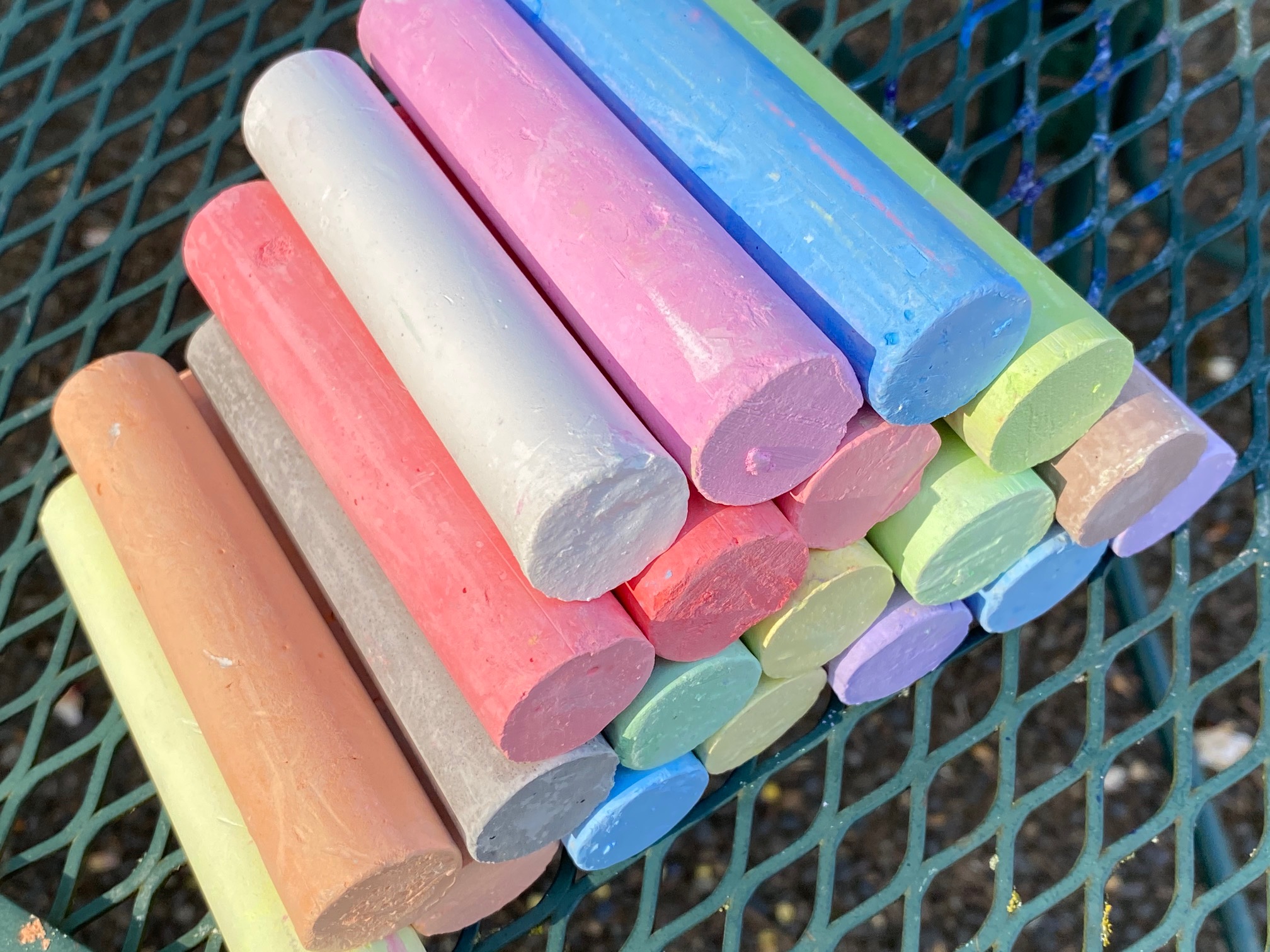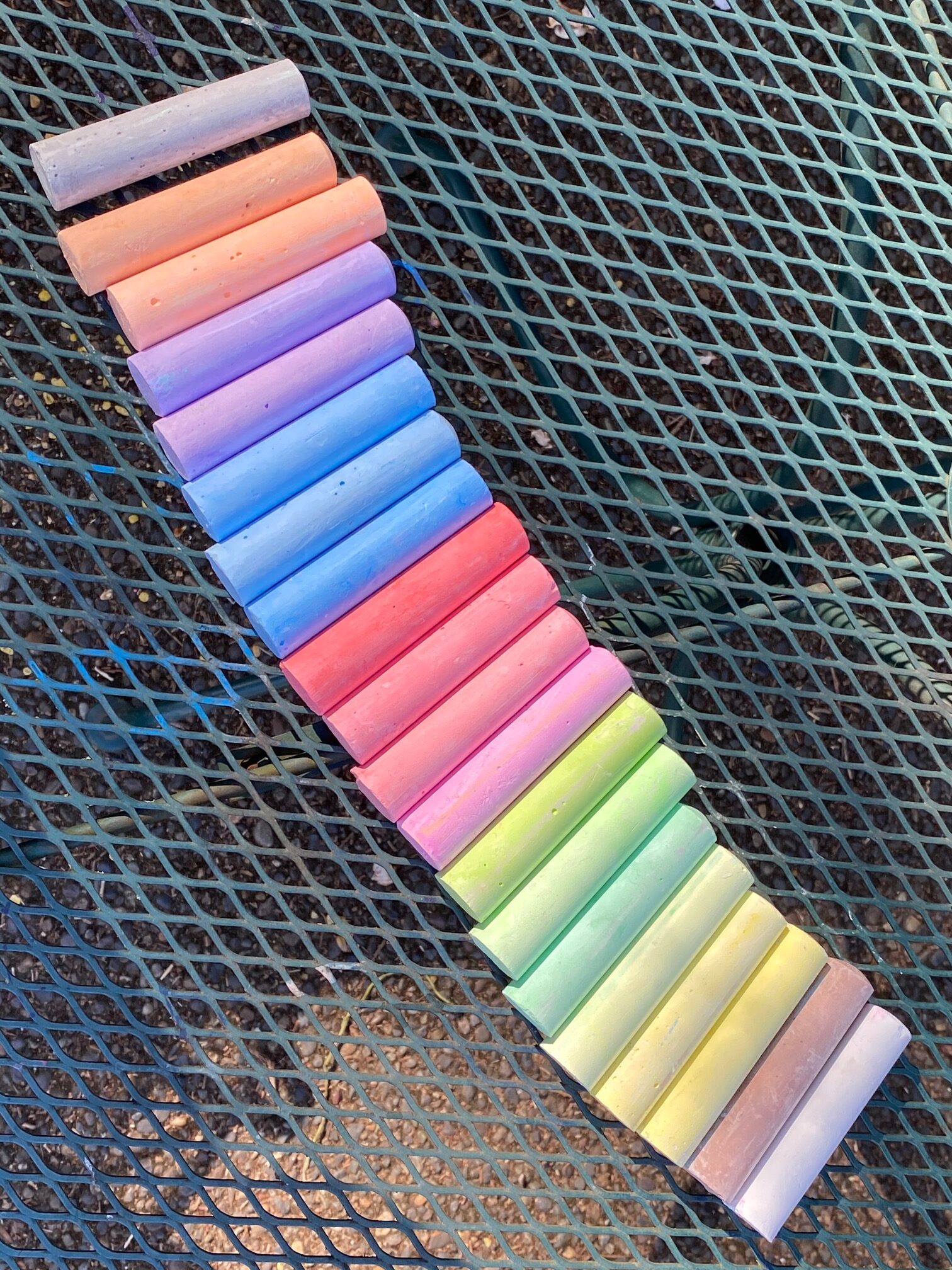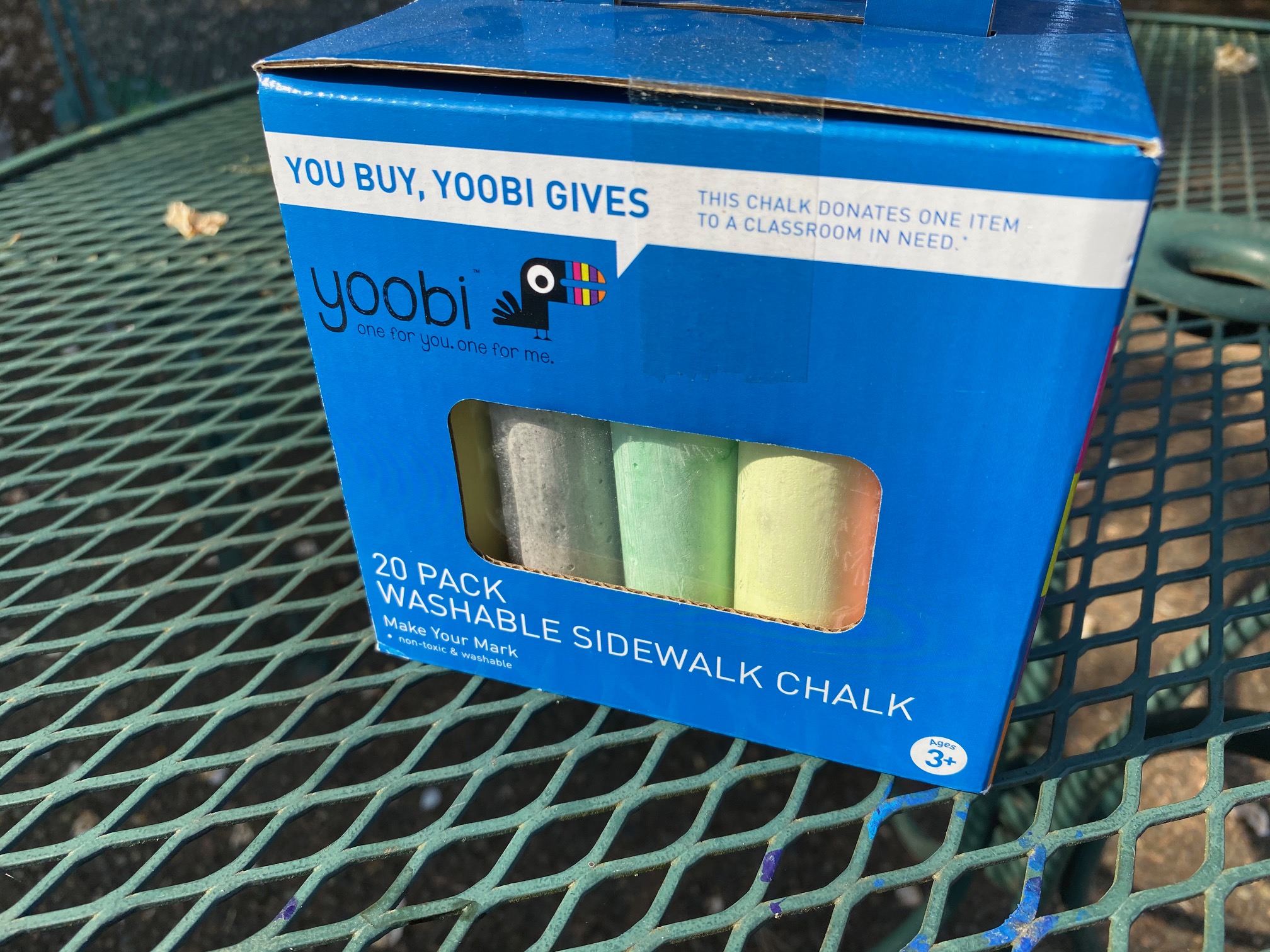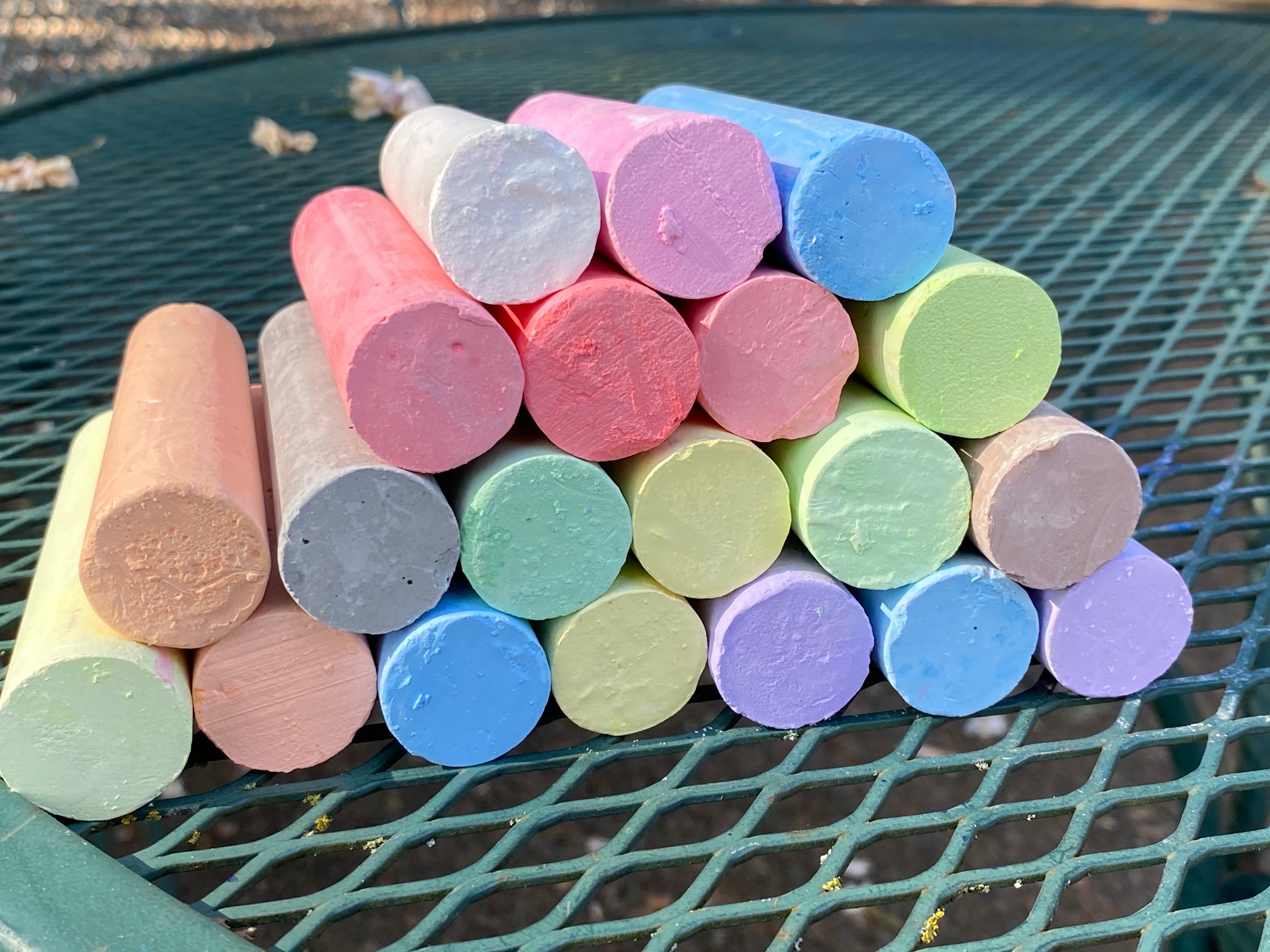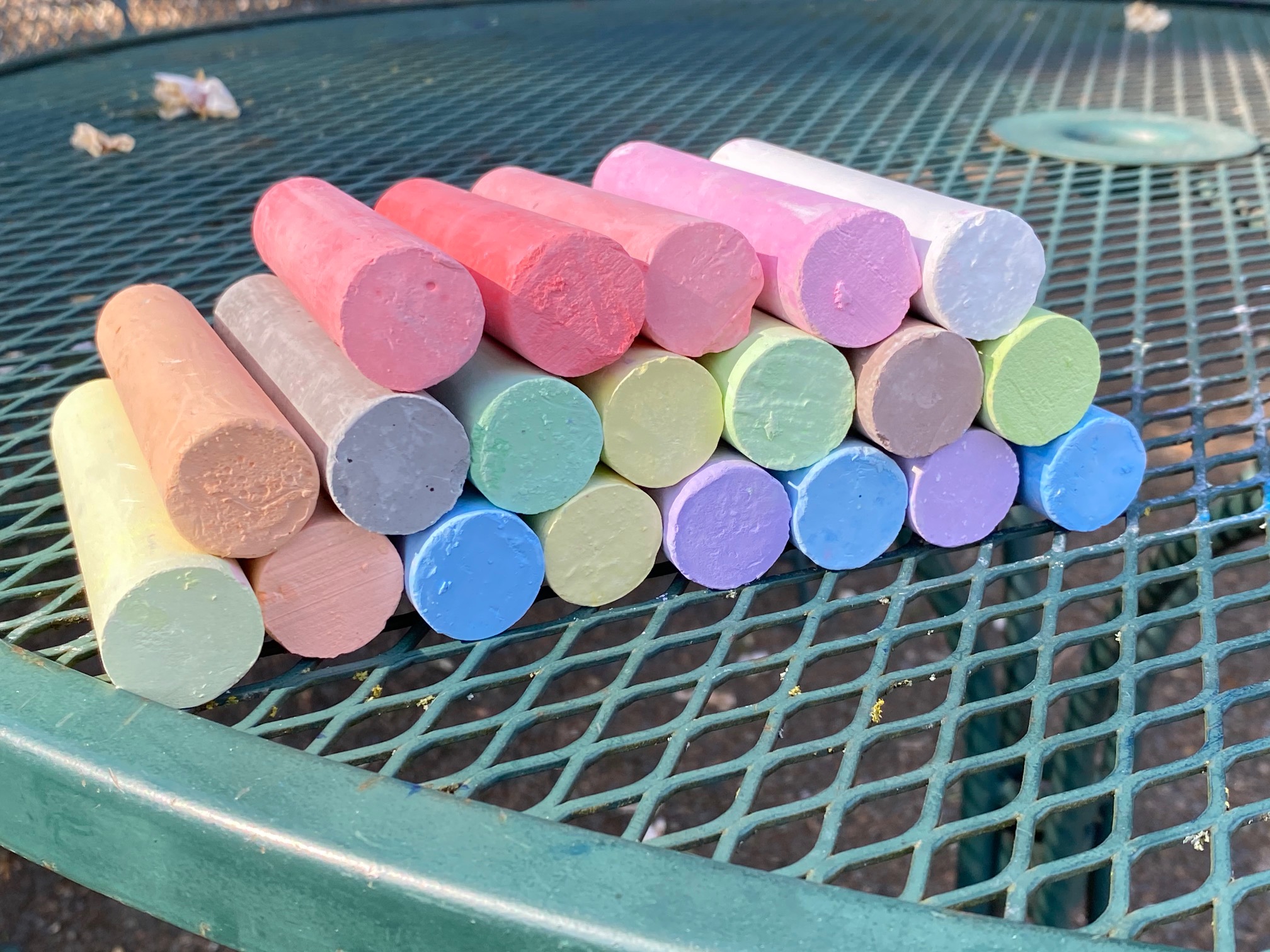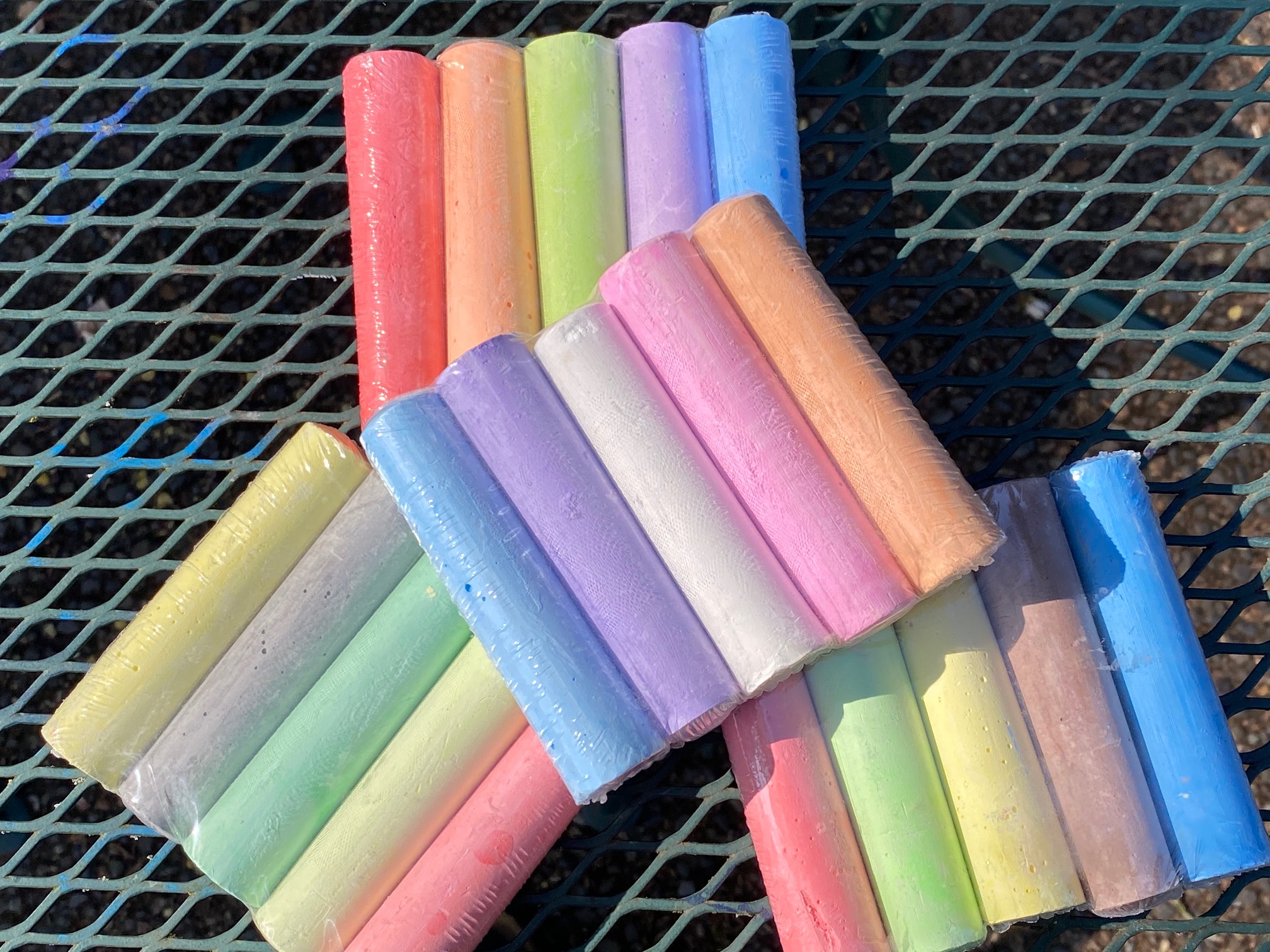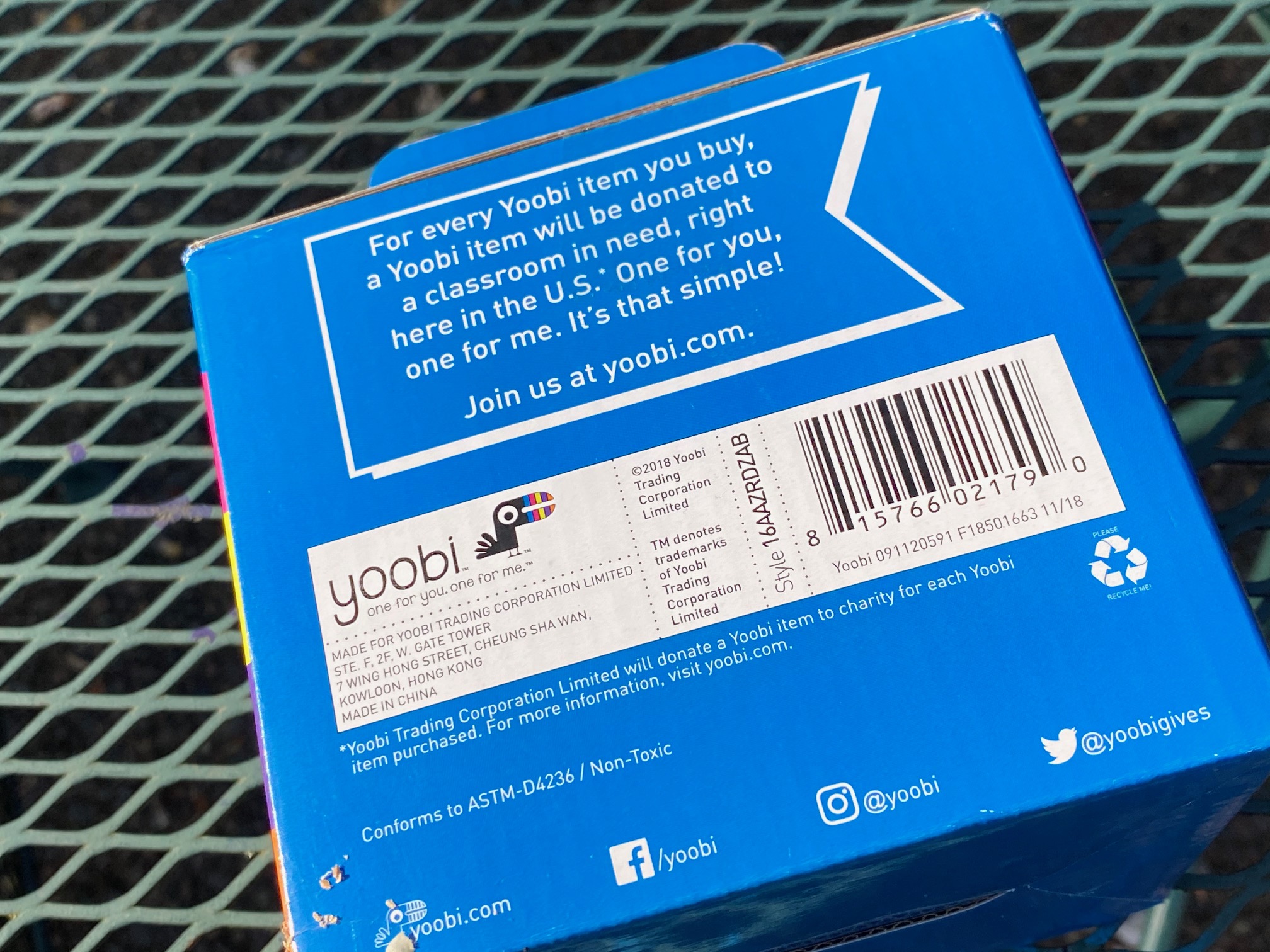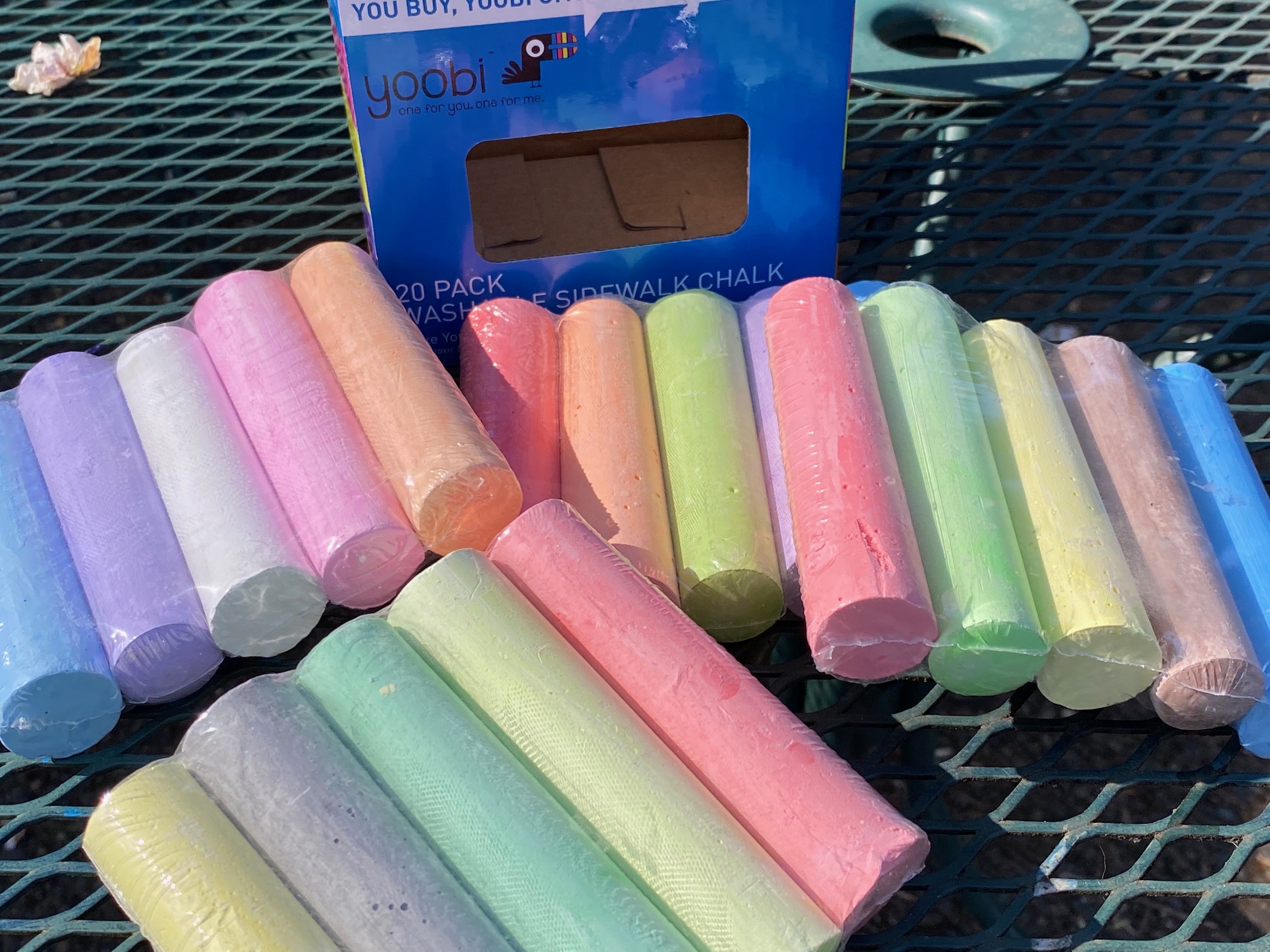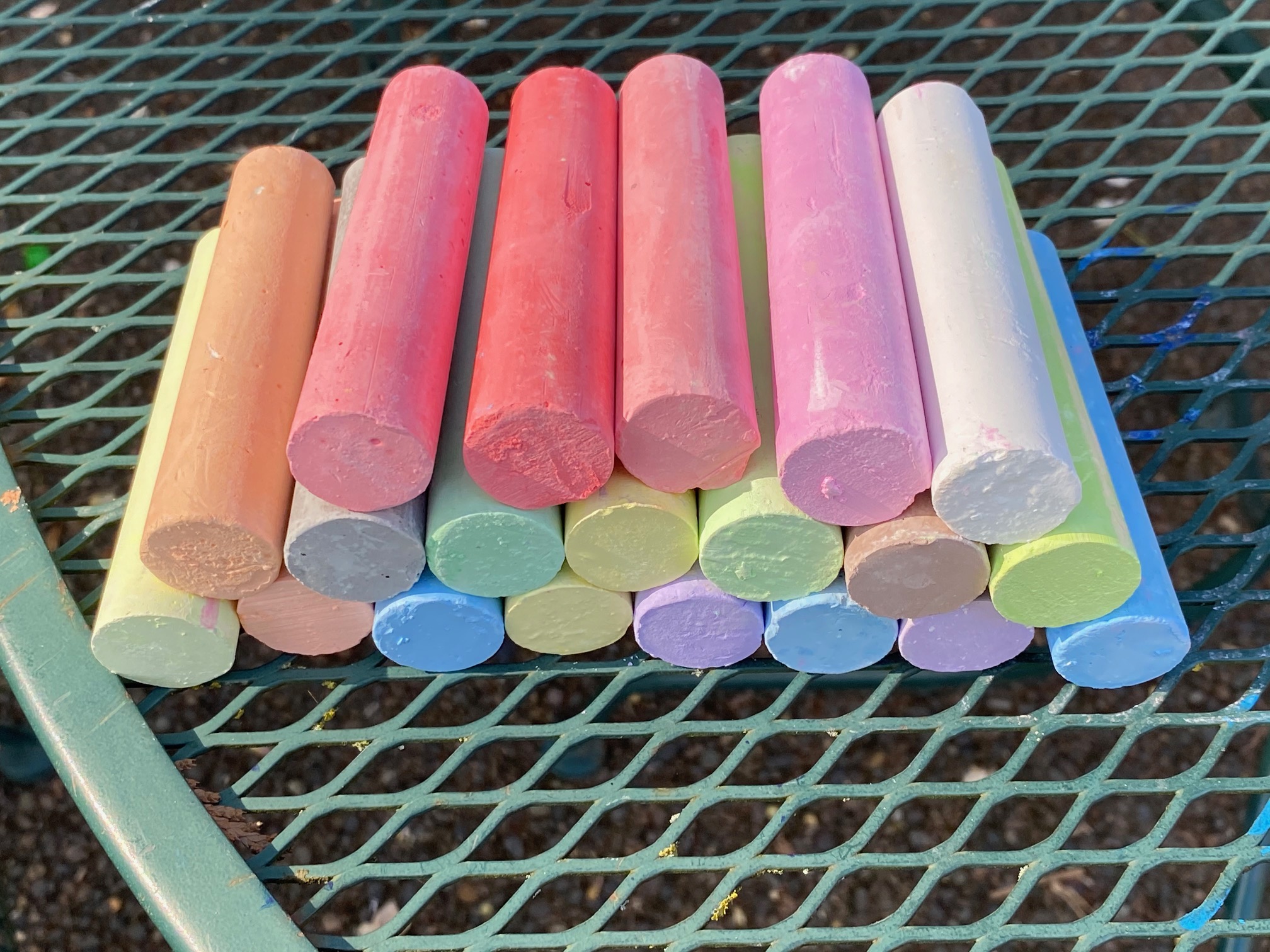Yoobi 20 Pack Washable Sidewalk Chalk: “Non-Detect” for Lead, Cadmium & Mercury. Safe by all standards.
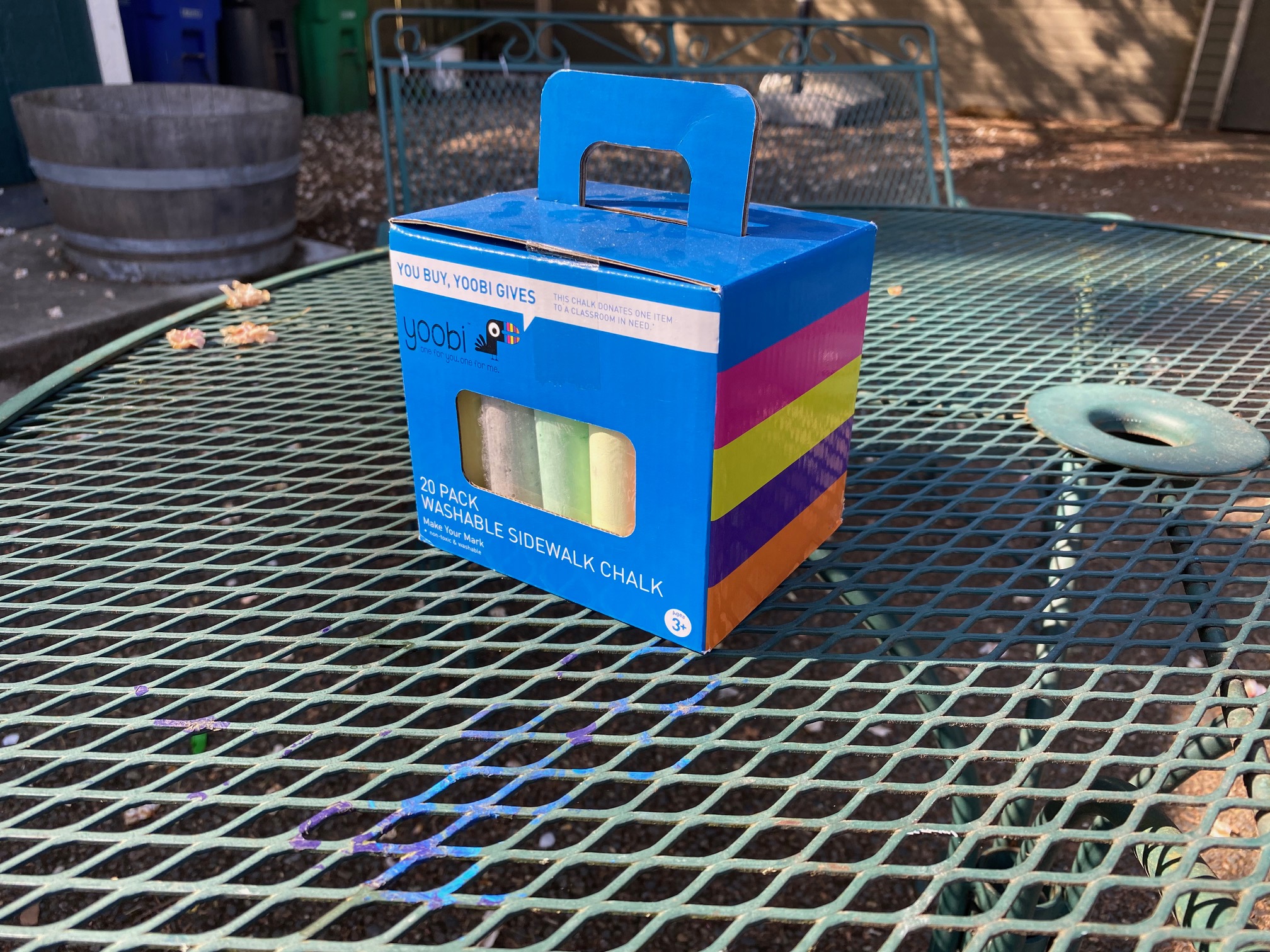

 Introduction:
Introduction:
Tamara Rubin is an independent advocate for consumer goods safety and she is also a mother of Lead-poisoned children. She began testing consumer goods for toxicants in 2009 and was the parent-advocate responsible for finding Lead in the popular fidget spinner toys in 2017. She uses XRF testing (a scientific method used by the Consumer Product Safety Commission) to test consumer goods for contaminants including Lead, Cadmium, Mercury and Arsenic.
Yoobi 20 Pack Washable Sidewalk Chalk
(purchased April 2019)
Below are the full XRF test results for the package of Yoobi brand sidewalk chalk shown in the photos on this post. Each color of chalk was tested for a minimum of 60 seconds. Tests were done multiple times to confirm the results reported. Here’s my affiliate link if you want to check this product out on Amazon*. Prior to purchasing ANY chalk for your children to use, please read the full conclusion (at the bottom of this post) regarding the testing of this product.
1.) Color One, Lime Green – 60 seconds
- Barium (Ba): 1,824 +/- 753 ppm
- Iron (Fe): 293 +/- 192 ppm
2.) Color Two, Lime Green (#2) – 60 seconds
- Barium (Ba): 1,874 +/- 773 ppm
- Iron (Fe): 868 +/- 243 ppm
- Titanium (Ti): 218 +/- 122 ppm
3.) Color Three, Teal Green Yellow – 60 seconds
- Barium (Ba): 1,712 +/- 484 ppm
- Iron (Fe): 1,086 +/- 164 ppm
Continue reading below the images.
4.) Color Four, Dark Blue – 180 seconds
- Barium (Ba): 2,066 +/- 415 ppm
- Copper (Cu): 292 +/- 61 ppm
- Iron (Fe): 524 +/- 141 ppm
- Chlorine (Cl): 17,000 +/- 1,900
5.) Color Five, Light Blue (#1) – 120 seconds
- Barium (Ba): 1,824 +/- 333 ppm
- Selenium (Se): 23 +/- 9 ppm
- Copper (Cu): 105 +/- 31 ppm
- Iron (Fe): 209 +/- 75 ppm
6.) Color Six, Light Blue (#2) – 60 seconds
- Barium (Ba): 1,680 +/- 787 ppm
- Copper (Cu): 157 +/- 88 ppm
- Iron (Fe): 1,219 +/- 269 ppm
- Titanium (Ti): 187 +/- 104 ppm
7.) Color Seven, Brown – 70 seconds
- Barium (Ba): 2,987 +/- 678 ppm
- Iron (Fe): 2,495 +/- 323 ppm
8.) Color Eight, Gray/Black – 80 seconds
- Barium (Ba): 2,419 +/- 610 ppm
- Copper (Cu): 83 +/- 55 ppm
9.) Color Nine, White – 180 seconds
- Barium (Ba): 1,546 +/- 534 ppm
- Iron (Fe): 647 +/- 152 ppm
Continue reading below the image.
10.) Color Ten, Dark Pink – 60 seconds
- Barium (Ba): 1,606 +/- 605 ppm
- Iron (Fe): 480 +/- 163 ppm
11.) Color Eleven, Orange-Pink – 60 seconds
- Barium (Ba): 965 +/- 437 ppm
- Iron (Fe): 427 +/- 109 ppm
12.) Color Twelve, Light Pink – 60 seconds
- Barium (Ba): 1,458 +/- 712 ppm
- Iron (Fe): 1,174 +/- 248 ppm
- Titanium (Ti): 126 +/- 78 ppm
13.) Color Thirteen, Dark Purple – 60 seconds
- Barium (Ba): 1,614 +/- 702 ppm
- Iron (Fe): 1,423 +/- 254 ppm
14.) Color Fourteen, Light Purple – 60 seconds
- Barium (Ba): 2,097 +/- 541 ppm
- Iron (Fe): 582 +/- 158 ppm
15.) Color Fifteen, Medium (Coral) Pink – 60 seconds
- Barium (Ba): 2,162 +/- 762 ppm
- Iron (Fe): 1,301 +/- 280 ppm
16.) Color Sixteen, Darker Yellow – 60 seconds
- Barium (Ba): 3,198 +/- 753 ppm
- no other metals detected
Continue reading below the image.
17.) Color Seventeen, Darker Yellow #2 – 60 seconds
- Barium (Ba): 2,481 +/- 810 ppm
- no other metals detected
18.) Color Eighteen, Lighter Yellow – 60 seconds
- Barium (Ba): 2,017 +/- 663 ppm
- Iron (Fe): 780 +/- 208 ppm
- Titanium (Ti): 115 +/- 66 ppm
- no other metals detected
19.) Color Nineteen, Dark-Orange – 60 seconds
- Barium (Ba): 1,797 +/- 453 ppm
- Iron (Fe): 2,615 +/- 227 ppm
- Titanium (Ti): 361 +/- 79 ppm
20.) Color Twenty, Orange – 60 seconds
- Barium (Ba): 1,981 +/- 479 ppm
- Iron (Fe): 861 +/- 154 ppm
- Titanium (Ti): 139 +/- 67 ppm
Continue reading below the image.
In Conclusion
Some considerations for chalk (this brand & other brands); Arsenic
Two of the colors shown (white & light pink) had intermittent (non-replicable) readings for trace (very low) levels of Arsenic. Here are two examples of those results: test one: 28 +/- 13 ppm Arsenic, test two: 15 +/- 10 Arsenic. Each of those levels was found with a 60 second test. Even if those levels were consistent throughout the product, the chalk would be considered safe by all standards (both standards applied to art supplies and standards applied to toys intended for use by children.)
Non-Replicable Readings:
I am very careful to only report results on this blog that I can (with certainty) state are “replicable, accurate and science-based”. If one cannot consistently replicate a reading, it is by definition not 100% certain. Since I could not replicate the Arsenic readings on the two colors of chalk [I found varying / non-replicable trace levels of Arsenic in only some readings on both the white and light pink colors], I have not included any of the reading sets that showed Arsenic. Each reading set shared above (for each color) is a full reading set for that color chalk that I was able to replicate with additional readings.
The nature of chalk:
HOWEVER, given the nature of chalk (both how it is formed naturally in the earth, and the nature of how it is made into a salable product by humans), it makes sense that there would be trace non-replicable levels (of various toxicants) found in at least one or two chalk samples in a box of 20. This is one of many reasons I don’t use chalk very often with my children ‚ and why I also avoid unknown brands (where there may be less manufacturing consistency, and/or accountability.) With my children – to minimize any inhalation hazard concerns – I also strictly limit chalk use to outside play (sidewalk / driveway / concrete) and encourage thorough hand washing afterwards. I have a few more examples of different chalk brands to report on here on my blog – but as you can see from this summary (of this single box of Yoobi brand chalk) – one single box of chalk can take me hours upon hours to fully test and report on in any meaningful way (with multiple one to three minute tests required for each and every color separately as the metal profiles vary significantly by color.)
What’s next for chalk?
Should I ever have funding available for digestive lab testing of dome of the items I test and report on here on this blog, I would love to do some digestive sampling of these chalk sticks to see if the Arsenic could be found at replicable levels in different samples of the chalk when tested with the degree of specificity and sensitivity possible with lab testing (down to single digit parts per billion, vs. the single digit ppm reading limitations for XRF technology). If there were consistent levels detectable by such lab testing, I expect it would likely be at much lower levels than the what can be consistently detected with a high-precision XRF instrument.
As always thank you for reading and sharing my posts.
Please let me know if you have any questions.
Tamara Rubin
#LeadSafeMama
Amazon links are affiliate links. If you purchase something after clicking on one of my links I may receive a small percentage of what you spend at no extra cost to you.
Never Miss an Important Article Again!
Join our Email List


